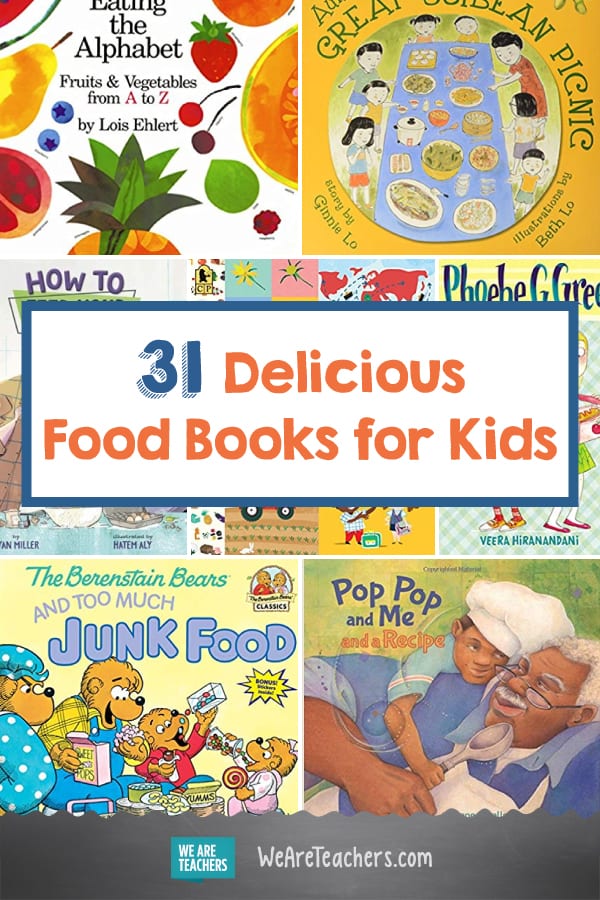Everyone has to eat, right? Children’s authors know that food details are perfect ingredients for enjoyable kid lit. Whether you’re looking to inspire preschoolers to whip up some pretend meals, build appreciation for different food traditions, or whet the reading appetites of MasterChef Junior hopefuls, here are our favorite food books for kids.
Just a heads up, WeAreTeachers may collect a share of sales from the links on this page. We only recommend items our team loves!
1. Feast for 10 by Cathryn Falwell (PreK–K)

A big and busy family counts their way through grocery shopping and meal prep in this early childhood classic. Spark conversations about students’ own family food traditions or inspire their own food-related counting books.
2. Pop Pop and Me and a Recipe by Irene Smalls (PreK–K)

Grandmas get a lot of credit for being the family bakers, but this story is all about Pop Pop. Fresh and fun verbs and onomatopoeia detail a grandson-grandfather duo’s joyous time together making a lemon cake as sweet as this story.
3. Little Pea by Amy Krouse Rosenthal (PreK–K)

This story delights young listeners with its unexpectedness. There’s nothing Little Pea hates to eat more than CANDY. Share it to spark conversation about favorite and least favorite foods. It’s also a prime choice for acting out or practicing retelling.
4. Eating the Alphabet: Fruits & Vegetables from A to Z by Lois Ehlert (PreK–K)

This book makes us want to both hit the farmers’ market and pull out the watercolor paints. Lois Ehlert makes fruits and vegetables fascinating—the colors, the variety, the shapes, the textures, and, of course, those beginning letters!
[contextly_auto_sidebar]
5. Pancakes, Pancakes by Eric Carle (PreK–1)

Countless classrooms of kiddos have been making pancakes after enjoying this story. Take a step back in time to when making the classic breakfast treat involved more than grabbing some ready-made mix. This is a childhood must-read.
6. Bee-bim Bop! by Linda Sue Park (PreK–1)

A young girl helps her mother prepare a traditional Korean dish for a family dinner. This is one of the catchiest books we know; students will not be able to resist chiming in.
7. The Little Red Hen (Makes a Pizza) by Philomen Sturges (PreK–1)
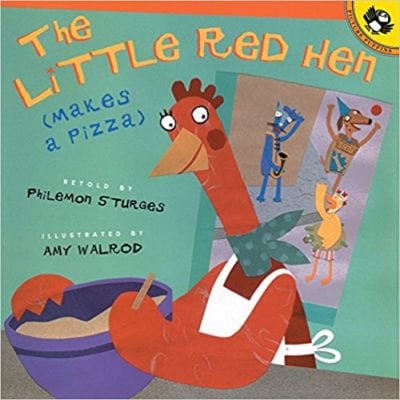
Little Red Hen stories are staples in early childhood classrooms, and this spinoff is one of our favorites. An urban-dwelling hen wants to make a pizza, but she can’t get her pals to help her gather supplies or shop around the neighborhood for ingredients. When the pizza turns out larger than expected, will she share?
8. Pizza Day by Melissa Iwai (PreK–1)

In the tradition of Soup Day (another favorite food title), a young child harvests veggies, prepares dough, and makes sauce for homemade pizza. We love how the text is simple but still includes plenty of great details and vocabulary—perfect for building kids’ background knowledge about where food comes from and inspiring real or pretend cooking.
9. The Berenstain Bears and Too Much Junk Food by Stan and Jan Berenstain (PreK–1)
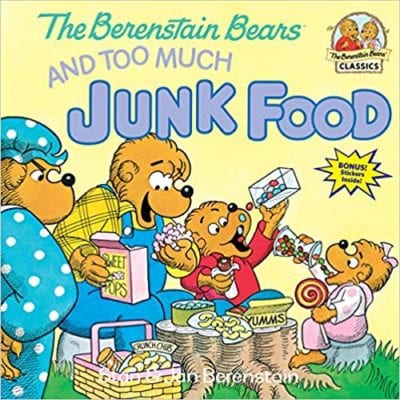
Teachers who are kids of the 80s will surely remember this one from their own childhood. When Sister, Brother, and Papa Bear’s snacking on Sugar Balls, Choco-Chums, and Sweetsie-Cola gets out of control, Mama Bear intervenes with a family plan for better health.
10. Yoko by Rosemary Wells (PreK–1)

While kids today probably eat foods from different cuisines more often than kids did when this title was published, the messages about being open to trying new foods and appreciating differences still ring true. Plus, the closing scene showing Yoko and Timothy’s pretend restaurant—and newfound friendship—will always be one of our favorites.
11. Food Truck Fest! by Alexandra Penfold (PreK–2)
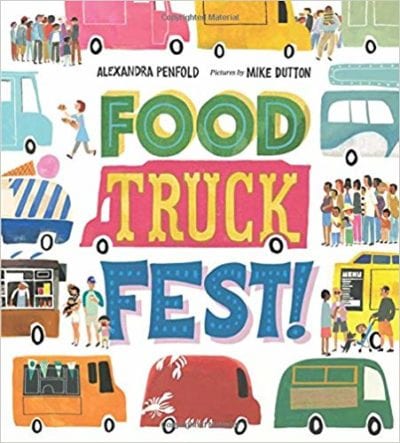
Finger-licking deliciousness served from a kitchen on wheels and eaten outside—what’s not for kids to love about food trucks? This fun title rhymes its way through a food festival day, highlighting different food offerings. Invite kids to share food truck experiences or plan their own future businesses.
12. Grow! Raise! Catch! How We Get Our Food by Shelley Rotner (PreK–2)

The opening line is one that makes students gasp: “A long time ago there were no stores or refrigerators.” Historical photos precede dozens of close-up shots, snippets of information, and quotes from those who farm, fish, or raise animals for food today.
13. I Will Never Not Ever Eat a Tomato by Lauren Child (PreK–2)
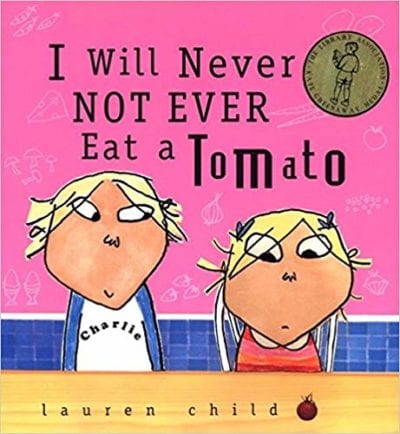
Charlie raises the bar for parents and caregivers with his masterful response to little sister Lola’s picky eating. Mashed potatoes that are cloud fluff from Mount Fuji and fish sticks straight from the Mermaid Supermarket are so much more tempting than regular food.
14. The Seven Silly Eaters by Mary Ann Hoberman (PreK–3)
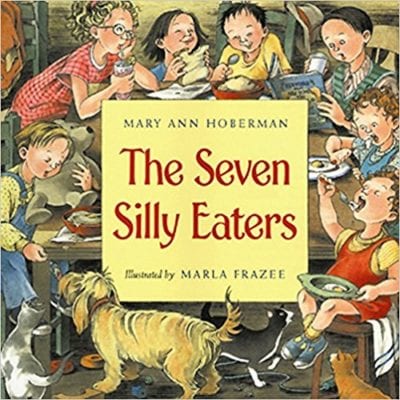
Mrs. Peters deserves a mom medal for her patience with her seven children. And her picky eaters acknowledge her with a birthday cake made with lots of love (plus pink lemonade, bread dough, and more). We’ve used this title for comprehension strategy work, exploration of author’s message, and inspiring “creative” recipe writing.
15. Cora Cooks Pancit by Dorina K. Lazo Gilmore (K–2)

Cora’s desperate to be a “real cook,” so when her mother offers to let her help cook pancit, a Filipino noodle dish, she jumps at the chance. She experiences the joy of cooking for others when her whole family loves her delicious results. Get students talking about the jobs they’d be proud to have in the kitchen.
16. Mr. Crum’s Potato Predicament by Anne Renaud (K–3)

Chef George Crum is known far and wide for his creative cuisine. When a “punctilious” customer returns his serving of potatoes three times, George’s crispy, salty response starts a new food craze: the potato chip! Review the author’s note with older students to practice noting real vs. invented details in this “fictional tale with a helping of truth.”
17. Maddi’s Fridge by Lois Brandt (K–3)

When Sofia realizes there’s nothing in her friend’s fridge, she wants to help. Raise kids’ awareness about food insecurity with this tender story.
18. How to Feed Your Parents by Ryan Miller (K–3)

In an amusing role reversal, adventurous eater Matilda resolves to expand her parents’ picky palates. She learns to cook dishes from a variety of cuisines and gets them eating everything: pho, fajitas, and even “green things.”
19. Clever Jack Takes the Cake by Candace Fleming (K-3)

When Jack receives an invitation to the princess’s birthday, he stretches his family resources to bake her a cake. When birds, bears, and more obstacles thwart his travel to the castle, Jack, truly clever, figures out a workaround.
20. Mission Defrostable (Lady Pancake & Sir French Toast) by Josh Funk (K–3)
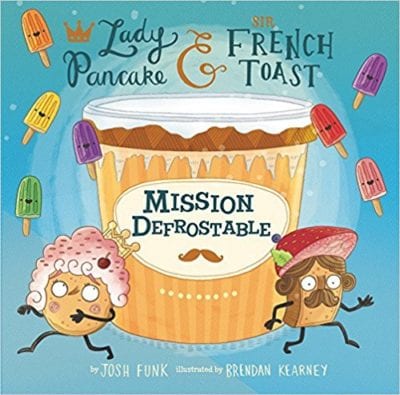
Along with its predecessors, Lady Pancake & Sir French Toast and The Case of the Stinky Stench, this title is sure to be frequently pored over by students in your classroom. It boasts breakfast food with mustaches, a devious stalk of asparagus, and a rollicking rhyme structure. (Plus, it’d be a fun tie-in when you study freezing and melting in science!)
21. How Did That Get in My Lunchbox? The Story of Food by Chris Butterworth (K–3)
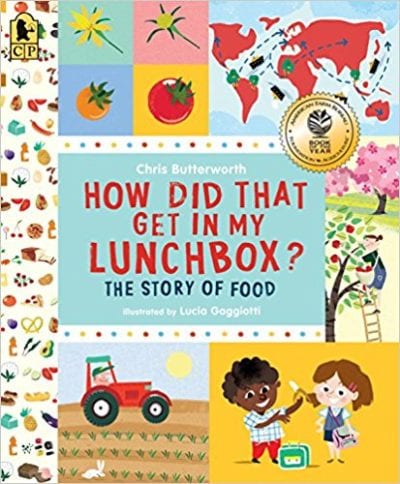
This engaging nonfiction title addresses a crucial but rarely-asked question. From sandwich bread to clementines, sections detail the step-by-step origins of common kid foods. Do you ever think about chocolate chip cookies as beginning with cocoa beans? We didn’t think so.
22. Auntie Yang’s Great Soybean Picnic by Ginnie Lo (1–4)

Food is best when enjoyed with friends and family. Jinyi’s family blends Chinese cooking with new traditions when they discover a soybean farm near Auntie Yang’s home.
23. What’s on Your Plate?: Exploring the Food of the World by Whitney Stewart (1–4)
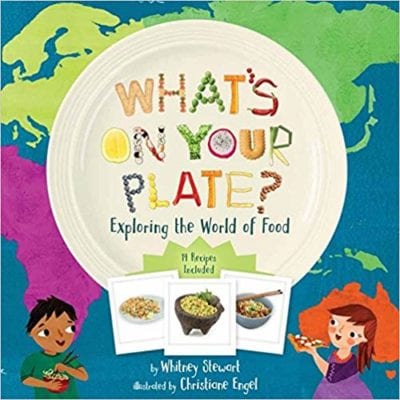
This title includes a smorgasbord of information about how cuisine, culture, and history intersect in various countries around the world. Maps depict which crops each country grows, and simple but appetizing recipes encourage kids to get cooking and tasting.
24. Lunch Will Never Be the Same! (Phoebe G. Green #1) by Veera Hiranandani (1–3)

This clever series achieves the sweet spot for new chapter-book readers and will be especially enjoyed by kids interested in cooking. In this opening title, the exotic-looking school lunches of French classmate Camille pique Phoebe’s interest—and appetite.
25. Rutabaga the Adventure Chef: Book 1 by Eric Colossal (3–6)
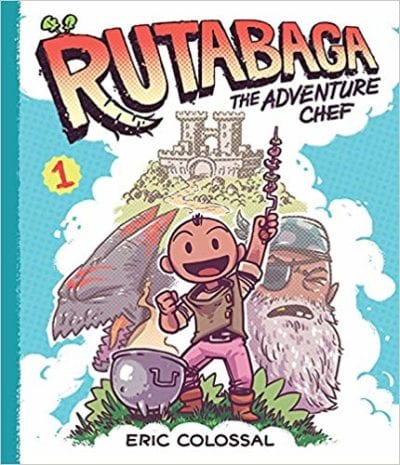
This graphic-novel series featuring a young boy and his magical cooking pot satisfies kids’ tastes for adventure—and adventurous eating.
26. Lights, Camera, Cook! Next Best Junior Chef by Charise Mericle Harper (3–6)

Here’s a series for middle grade readers who imagine themselves on a competitive cooking show. This first title is readable, fast paced, and full of foodie details. Which characters will be able to stand the heat once the competition begins?
27. Stef Soto, Taco Queen by Jennifer Torres (3–6)

Now that Stef is in seventh grade, being picked up in her family’s taco truck is anything but cool. Middle grade readers will connect to the authentic family relationships and themes—along with the mouthwatering Mexican food described.
28. Bliss by Kathryn Littlewood (3–6)

When parents go out of town sans kids, it’s always cause for a bit of stress. But when your parents run a magical bakery and leave you in charge of the key to the magical Cookery Booke? Well, read this story and find out what happens. Twelve-year-old Rosemary has her work cut out for her in this light and fun novel. Keep young baking aficionados reading by serving up the other installments of this trilogy.
29. A Long Line of Cakes by Deborah Wiles (4–6)

When the Cake Family rolls into Halleluia, Mississippi, 11-year-old Emma is determined not to get attached to the place. After all, her parents are constantly uprooting her and her siblings to move their family business, The Cake Café. With plenty of culinary metaphors, humor, and charm, this middle grade novel explores what it means to find your home.
30. Slider by Pete Hautman (5–8)

David owes his mom some serious cash. Will prize money from a local pizza-eating competition help him pay her back? Readers will be cheering for him as he navigates plenty of relatable adolescent trials and triumphs.
31. The Omnivore’s Dilemma: The Secrets Behind What You Eat (Young Readers Edition) by Michael Pollan (7 and up)

The original version of this deep dive into America’s food system shook up conversations about nutrition and diet. Bring teens up to speed with this compelling young readers’ version and let them weigh in.
Which food books for kids tickle your teacher taste buds? Let us know over at our WeAreTeachers HELPLINE group on Facebook.
Plus, check out all of our book lists here.
